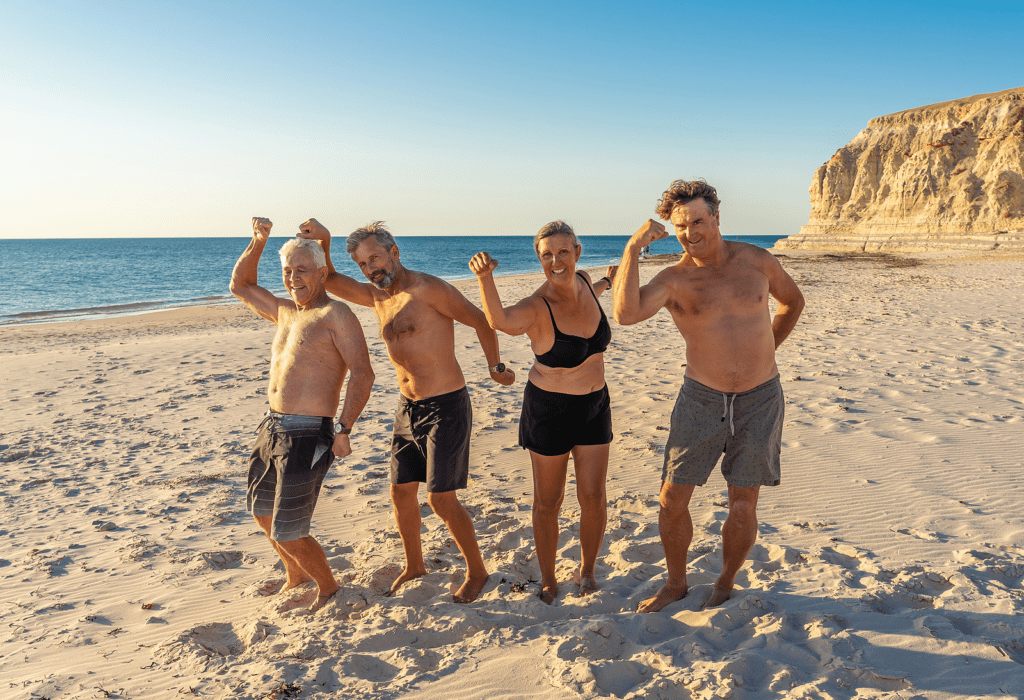Teaching in Vietnam – learn to manage yourself…
There’s a lot of information on the internet for the benefit of newcomers to ESL teaching in Vietnam about managing a class, writing a lesson plan, maximising the benefits of information technology and suchlike. Regrettably, information on how new teachers should manage themselves from a mental health perspective is scarce. Your ability to manage your wellbeing is pivotal in acquiring the skills and knowledge necessary to become a competent – and medium to long term – ESL educator.
Teaching in Vietnam can be immensely pleasurable and rewarding, or it can be your worst nightmare. Teachers who are adept at managing themselves tend to do well; those who aren’t inevitably move on to a different profession. Managing your wellbeing while teaching in Vietnam mainly involves ‘being aware’, making subtle changes in how you approach your teaching work or both. It rarely requires folks to make drastic changes in their life, although this does happen on occasions.

While doing some rudimentary research before writing this blog post, I was surprised to see that the Australian Government accredited TESOL programme at AVSE-TESOL in Hanoi, Ho Chi Minh City and Phnom Penh is the only TESOL or TEFL course in Southeast Asia that has ‘managing yourself’ or similar as a ‘stand-alone’ unit. Yet another area where ESL teacher training at AVSE-TESOL is ahead of the pack.
In this blog post, I’ll shine a light on three areas where people who are new to teaching in Vietnam can positively contribute to their wellbeing – from today – managing stress, time management and building a teaching portfolio.
Stress
In plain English, stress is an adverse reaction that some people experience when subjected to excessive pressure or have demands placed on them. Why touch on stress in this blog post? Firstly, it’s a hot topic amongst people teaching in Vietnam. Bemoaning and finger-pointing are commonplace in ‘teaching in Vietnam’ social media platforms, with schools named and shamed, mostly unfairly, for being the root cause of a teacher’s stress. Secondly, and more importantly in my view, stress can have a disastrous effect on our ability to process information. This can have serious implications on a teacher’s:
- Situational awareness within the classroom
- Ability to make objective decisions
- Ability to communicate effectively
- Capacity to competently discharge their duties

Like any profession, there are many elements of teaching that are stressful. Stress can manifest in various ways, including, but not limited to: working long hours; living away from home for the first time; delivering unfamiliar course content; dealing with the pressures associated with student achievement, or being ‘buried’ under a mountain of paperwork. Some or all these factors could lead to a new teacher feeling that they’re unable to cope. Whether it’s just a hint of a feeling or something more paralysing, here are some coping strategies that have worked for me in my role as an ESL teacher and may work for you also:
- Don’t ignore stress. If you can feel the pressure building while teaching in Vietnam, don’t wait until it’s too late to release the valve or seek assistance. It’s okay to find it hard to cope now and again, and it’s okay to feel angry or upset. These are natural human emotions. Instead, work to build your stress awareness, learn to look out for the signs and recognise potential triggers. Once you can acknowledge stress building or identify a stressor, you become more equipped to manage your responses.
- Gain perspective. Stress can sometimes result from a loss of perspective. When we become overwhelmed, we can lose sight of what is important. If you’re feeling stressed, then you may need a new frame of reference, whether that means taking a day off, spending some time with friends or family or simply getting away from the teaching environment for a while. This might at first feel counterproductive, especially if you are balancing lots of tasks, all of which are pressing. However, a break or change in environment can revitalise and refocus the mind.
- Learn to relax. Relaxation is said to restore our balance. Therefore, it’s crucial that you develop the ability to switch off at some point in your day and take the opportunity for a few moments of calm. For some people, this is through exercise. For others, it’s quiet meditation, reading a decent book or watching a film. Most importantly, don’t confuse relaxation with recreation. If you are already exhausted in daily life, trying to relax by doing even more, may not be the panacea. Relaxation techniques that could be used to reduce stress include focused breathing exercises and meditation. If you feel that you’re struggling and the sense of being overwhelmed won’t abate, make sure you seek medical assistance.

- Be organised. Becoming more organised can be a useful preventive measure in reducing personal stress. It’s usually those moments when our lives seem cluttered and out of control that our coping systems become more fragile. Many of these moments of inundation can be curtailed by learning to manage time more productively.
Time management
Time management plays a pivotal role in handling the demands of ESL teaching in Vietnam. Not only will poor time management affect the quality of your teaching and potentially your ability to go on to find other work, but it can also detract from the enjoyment experienced in the process itself. Moreover, poor time management, a lack of work structure and poor course planning can lead to greater levels of stress. While much of an ESL teacher’s role is framed by the institute and school timetables, assessment frameworks and deadlines, the effective use of an individual’s time can lessen the feeling that there is simply too much to do and not enough time to do it in. Here are some hints to assist you in productively managing your time while teaching in Vietnam:
- Create a teaching in Vietnam ‘to-do’ list. One of the fundamental tools for managing time is that list of things you need to complete and when they need to be completed. The to-do list essentially consolidates all your tasks into one place. From there, you can prioritise the tasks and tackle the important ones first. Also, by prioritising the tasks according to their urgency, you reduce the temptation to start with more manageable tasks rather than those that are most urgent.
- Review your list. It is a matter of priority that you ensure the to-do list is monitored, reviewed, and updated on daily. The to-do list should be a rolling resource that you constantly reference to ensure its currency and relevance to your work teaching in Vietnam.

- Create an organisational framework. Keeping on top of your administrative tasks, including the boring stuff like filing, student reporting and associated school paperwork, will ensure your stress levels are not heightened by an avalanche of jobs and competing deadlines. Remember, stress levels can build if you leave everything until the last minute.
- Delegate! Delegation is arguably the most crucial time management skill. If you are allowed to delegate while teaching in Vietnam, use it wisely and strategically. Of course, this doesn’t mean that you should try and get someone else to do the work for you, but if your school provides clerical and/or technical support, avail yourself of the service. This will ultimately increase opportunities for you to invest in duties or tasks that provide the most significant impact within the classroom.
- Set aside time each day for communication, such as emails and phone calls. Doing everything in an assigned block of time is far more efficient than spreading tasks out across the day in a piecemeal fashion. Moreover, you’re less likely to leave emails unanswered if you know there is an assigned time for dealing with them.
Building a portfolio
Folks who are new to ESL teaching in Vietnam often underestimate the value of creating a ‘teaching portfolio’ and developing the habit of keeping it updated. So, what exactly is a teaching portfolio? It’s a personal record drawn up and compiled by the teacher. The teaching portfolio is an effective way for teachers to reflect upon, describe and document their teaching philosophy, goals and achievements. In addition, it provides a structured means of presenting information for job search, promotion or career enhancement. Most importantly, if you make a point of keeping your teaching portfolio updated, you won’t have to ‘reinvent the wheel’ by remaking lesson plans and preparing teaching resources for topics that you’ve already taught. In short, the ‘tools of your trade’ will be in one place.

Here are eight tips on how to start putting a ‘teaching in Vietnam’ portfolio together.
Tip 1. At the beginning of the portfolio, it’s important to outline your teaching philosophy via a brief statement (1–2 pages). Essentially, you should aim to explain why you make the pedagogical decisions that you do.
Tip 2. Endeavour to describe and provide a framework of the teaching responsibilities to which you’ve had exposure – if any. This can be as simple as listing in tabular form the units or courses, levels, and class sizes you have taught.
Tip 3. You need to show the reviewer evidence of your effectiveness as a teacher. This may be illustrated by providing examples of selected written comments from teacher evaluations, reference letters from students, summaries of peer teaching observations, and the like.
Tip 4. What teaching strategies do you deploy while teaching in Vietnam? Put simply, what kind of work do you do with your students? Examples here could include lesson plans, course plans, videos of classes you have facilitated, learning resources or handout materials you have created – the tools of your trade (see above).
Tip 5. The portfolio should also show your involvement in developing syllabi and any influence you may have brought to higher course-level planning, design or development. For example, amendments you have suggested to a syllabus, courses you have planned, learning objectives you have devised belong in the portfolio.
Tip 6. What methodology do you use to construct assessments and feedback material? This section is an opportunity to demonstrate the approaches you use to map assessment regimes to learning outcomes and how these instruments have been used to help students evaluate their progress. In the context of teaching in Vietnam, evidence might include examples of written feedback, tests and quizzes you’ve formulated, assessment mapping samples – and a precis of how things worked in practice.
Tip 7. What investment have you made in your personal and professional development? Provide descriptions of professional development experiences that you have engaged in to enhance your instructional abilities.
Tip 8. Remember to organise your portfolio so that it is easily accessible, is well structured and reflects your best work and thinking. This applies regardless of the portfolio’s medium, whether digital or paper-based. It is also important to remember that it is much easier to collate and file documents as you go along rather than trying to create a portfolio in one sitting, under a tight deadline.
Summary
Teaching in Vietnam is hard work. It’s not all ‘bells and whistles’. There’ll be times when you love the work, but like any job, there’ll be times when you’d rather be in another place. This blog post was directed at shining a light on three simple things that you start doing now to manage your wellbeing throughout your teaching journey proactively. First, learn about stress and how to manage it. Second, become a time management guru. Third, develop a teaching portfolio. Your longevity teaching in Vietnam is in the interest of all stakeholders.
About the writer: Peter Goudge is the founder and owner of AVSE-TESOL in Vietnam, Cambodia and Online. TESOL certification (Australian Government accredited) from AVSE-TESOL offers a brilliant pathway to teaching English in Southeast Asia. Here is a link to the AVSE-TESOL website: www.avse.edu.vn
Teaching in Vietnam – it’s ‘PHO-nomenal’…
From the very beginning of this short piece, I want to confess to an abject failing on my part during the 15+ years that I’ve spent teaching in Vietnam and running my business, AVSE-TESOL. Here it is! I didn’t take to eating (or slurping) Pho until very recently. Putting together this article was the impetus for my change of heart. I suspect my dislike of Pho over the years has something to do with a medical condition called Misophonia. Folks with this condition have profound and adverse reactions to the sound of other people eating. I can feel my blood pressure rising at this moment just thinking about slurping, chewing and suchlike. While I’ve never been diagnosed with Misophonia, I am very familiar with the symptoms. The good news is that I found the perfect antidote, but more of that later.
Now that I’ve bared my soul to personal shortcomings when it comes to Pho consumption, let’s turn our mind to the purpose behind this article. The Story of Pho! What’s the origin of Pho? Why is Pho considered ‘PHO-nomenal’ by every Vietnamese person I’ve ever met, including my extended family and colleagues teaching in Vietnam? Where will Pho be in 2040 – how ‘Pho’ will it go (sorry, I couldn’t help myself)? We’ll finish off this piece with the ‘Ultimate Pho Recipe’ for you to try at home.

Origin of pho
Before doing some background reading, I was under the impression that Pho dated back to when King Hung 1 was a mere twinkle in his mother’s eye during the legendary Hong Bang period, centuries ago in Vietnamese history. No, this is not the case. Pho only dates back to the late 19th century. Gosh, what a surprise! In stark contrast, the famous Aussie Meat Pie dates back to 9500BC during the Neolithic Period. The Ancient Egyptians even ate a version of the Aussie Meat Pie, according to archaeologists.
Pho, as we know it today, gained popularity in the north of Vietnam in the mid-1880s. It brought together the key ingredients of Chinese and French cuisine at the time. Keep in mind that the Chinese have tried on a few occasions throughout history to occupy Vietnam. The French colonised pretty much the whole of Vietnam (and neighbouring Cambodia) for more than 100 years until the decisive battle at Dien Bien Phu in 1954 heralded the end of French occupation. The Chinese influence on Pho includes noodles, rice, vegetables and various spices; the French contribution was red meat.
Over time, Pho made its way from the north of Vietnam to the country’s southernmost point in Ca Mau Province, located in the Mekong Delta. On its north to south journey and over time, the original version of Pho has evolved into a contemporary ‘dish’ available in restaurants of all sizes and traditional street food outlets the length and breadth of Vietnam. It’s served up to visiting Kings, Queens, Presidents, Prime Ministers and even the occasional dictator. There’s a terrific photo on the internet of Bill Clinton eating Pho at a restaurant in downtown Ho Chi Minh City during an official visit. Certainly, it’s a staple food of most long-term expats.
Why is pho considered to be ‘PHO-nomenal’?
From what I’ve seen over the past 15+ years, Vietnamese people, foreigners I’ve met through my work teaching in Vietnam and random expats, enjoy a decent bowl of Pho for the same reasons: 1. it’s cheap; 2. it’s quick, and 3. it’s consistent with a balanced diet and healthy living.

There is no question – Pho is cheap. At a ‘half-decent’ inside restaurant, a bowl of Pho in Ho Chi Minh City will ordinarily cost no more than US $2.00. If you’re happy to sit on a small plastic stool at a small plastic table (almost universally blue in colour for some unknown reason) and eat your Pho with shared chopsticks in a shared plastic bowl, then the price will be not much more than US $1.00. The good news is that the shared utensils and bowls are washed between customers, or at least they should be. Vietnamese customers don’t seem to care. They simply take a napkin, give the utensils a quick wipe, and then ‘hoe into’ their meal. Expats teaching in Vietnam tend to a bit more discerning. I’ve seen expats bring their own bowl and utensils to an outside Pho stall – to the amusement of locals – or ask to rinse the utensils that are provided with boiling water. It’s probably wise, but I can’t imagine that I’d be bothered going to so much trouble.
Anecdotally (with my Vietnamese wife as the source), it will take an average person 5 minutes (+/-) to pull together a bowl of Pho, assuming the ingredients have been prepared beforehand, chopped, diced, boiled and suchlike. In a restaurant, it takes around 3 minutes.
An average-sized bowl of Pho contains 350 to 400 calories – 20% of the recommended daily intake for an adult. Is Pho as healthy as people suggest? The answer is ‘yes’ and ‘no’. ‘Yes’ – if you go light on the noodles and salt, heavy on vegetables and opt for lean meat. ‘No’, if the bowl of Pho is dominated by noodles, subject to a heavy hand with the salt and has undesirable additives for colour or flavour. I once saw a foreign chap add sugar that he brought with him, to a bowl of Pho at a street stall, but I don’t think this practice is usual.
Where will pho be in 2040?
When it comes to history and fast food, Pho clearly does not match the ‘reverence’ of the Aussie Meat Pie, which we know dates back to pre-biblical times. Moreover, from my observations, Vietnamese folks’ love for a bowl Pho is yet to match the passion that the French have for a plate of snails. I have always found it to be one of life’s ultimate contradictions that the French version of ‘fast food’ is the ‘snail’, but I digress.

While Pho has inroads to make, quite literally of biblical proportions, or perhaps I should say ‘portions’ given the context, make no mistake, it has ‘rusted on’ support. These days, those who love a good-sized bowl of Pho go well beyond local people, ‘Viet Kieu’, tourists, and expats teaching in Vietnam. Business conglomerates – large multi-business and multi-national companies – are ‘gobbling’ up the ‘Pho Market’ in Vietnam and elsewhere. Pho 24 (Vietnamese owned) now has more than 50 Pho restaurants across Vietnam and abroad. Pho Hoa (2018 Top Global Franchise List – Entrepreneurs Magazine), 70+ locations, Pho Que (rather an unfortunate name) Huong is another North American Pho Business with a sizable international footprint.
So, where will Pho be in 2040? I expect it will be every bit as popular as it is now, but increasingly it will be consumed in fast food chains rather than at small food stalls found on the street. Just as the proliferation of large shopping malls spelt the end of ‘mum and dad’ grocery shops, it looks to me that the Pho Fast Food Franchises spell the end of the small, blue plastic stools and tables and the shared utensils that I referred to earlier.
The ultimate pho recipe
After an exhaustive search online, speaking with Pho connoisseurs, taking advice from friends and acquaintances in my ‘teaching in Vietnam’ orbit and trying various concoctions in my own kitchen (while wearing earmuffs – note my earlier comment about an antidote to Misophonia), I’m confident that I’ve found the ‘Ultimate Pho Recipe’. It belongs to a quirky Vietnamese / Canadian chap named Quang Tran. While I have never met or spoken with Mr Quang, his version of Pho scores 10/10 from me, which shouldn’t be underestimated given my eating affliction, although ear muffs make a world of difference. My extended Vietnamese family – all life-long Pho eaters – also gave Quang’s Pho recipe a perfect score. You will find Quang Tran’s Pho recipe on his YouTube channel found here.
Summary
We’ve covered a lot of ground in this piece – we’ve ventured near and ‘Pho’ (again, I couldn’t help myself). I’ve bared my soul about the sound of chewing and slurping. We’ve looked at the origin of Pho and noted that it only goes back 120 years or so. Surprising for sure! We’ve turned our mind to where Pho will be in 20 years from now, concluding that the blue plastic chairs and tables (and shared utensils) are under threat from business conglomerates. It has been determined that the ‘Ultimate Pho Recipe’ belongs to the Mr Quang Tran. This occurred after an extensive research and consultation process including, crawling the internet, and reaching out to expats who, like me, are teaching in Vietnam. Arguably of most importance, it’s been determined that ear muffs allow folks like me to enjoy a good bowl of Pho. This alone is news that’s worthy of being spread ‘Pho and wide’!
About the writer: Peter Goudge is the Managing Director (and owner) of AVSE-TESOL in Hanoi, Ho Chi Minh City, Phnom Penh and Online. Originally from Melbourne, Australia, Peter now calls Ho Chi Minh City home. For more than a decade, AVSE-TESOL has been providing aspiring ESL educators with the skills, knowledge and certification they need to land well-paid teaching jobs in Vietnam or Cambodia. Check out the AVSE website: www.avse.edu.vn
‘Grey Nomads’ – teaching in Vietnam…
Here’s a prediction based on phone calls and emails that I’ve received in recent times. I’ve got it pegged that when it’s possible for people to travel freely again, we’ll see international Grey Nomads (50+ years of age), predominantly from Australia, the United Kingdom and the United States, teaching in Vietnam (and Cambodia) in unprecedented numbers.

Grey Nomad is an endearing phrase that’s commonly used Australia. Over the past few years, the phrase has gained traction in Southeast Asia. In the context of teaching in Vietnam, a Grey Nomad is a foreigner of a more mature age who has travelled to Hanoi, Ho Chi Minh City, or elsewhere in Vietnam to work as an English language teacher. Arguably, the most famous Grey Nomad of all time is Marco Polo. He travelled around Asia in the late 1300s and early 1400s. History tells us that Marco Polo took full advantage of the opportunities presented to him in Asia; it seems to me that the modern-day Grey Nomads are doing the same.
Let’s drill down a bit on these Grey Nomads. We know they’re 50+ years of age, but what else do they have in common? What pathway do they typically follow from their former life to teaching abroad? Why is Vietnam a beacon for Grey Nomads? How are they received by the Vietnamese schools that employ them?
Pathway
The pathway that leads to teaching in Vietnam for a good number of mature teachers is remarkably similar. Most are single people, professionally-minded, with a solid work history. They’re seeking a positive experience with an element of adventure in retirement or following redundancy, divorce or another life-defining moment. Interestingly, the vast majority don’t hold a university degree.
Almost to a person, Grey Nomads that I’ve encountered through my work teaching in Vietnam are well-informed. They’ve done the necessary research. Your average will Grey Nomad has it pegged that the number of English teaching jobs in Vietnam is greater than the number of suitably qualified people to fill them – many times over. They know it’s not enough to be a native-English speaker who happens to be breathing and upright to call themselves an English teacher. Most Grey Nomads have invested in quality English as a Second Language (ESL) teacher training that’s government accredited and internationally recognised. The Australian Government accredited TESOL programme at AVSE-TESOL in Hanoi and Ho Chi Minh City is an excellent example of top-notch ESL teacher training. More ‘mature heads’ know that quality training provides the skills, knowledge and certification that are pivotal to getting a decent job in the first place – and to do the job well. Grey Nomads are attuned to the idea that job training – teacher training in this instance – is not an area where people can scrimp.

Why is Vietnam a beacon?
Typically, foreigners who are teaching in Vietnam earn a decent salary; from my observations, the vast majority of Grey Nomads aren’t motivated by how much they can earn. On a list of motivating factors, making money would come in around number nine for most ‘Grey Nomads’. Not in any particular order – lifestyle, low cost of living, personal safety, ease of travel – within Vietnam and to neighbouring countries, diversity of experiences on offer, warm climate, decent beaches, and friendly local people – would all rate higher than making money. Most of the Grey Nomads who are teaching in Vietnam are happy if they can cover their everyday costs. I suspect this reflects their ‘stage of life’. Grey Nomads tend to be people with a long work history. Some will have worked like a ‘Trojan’, perhaps even held two jobs at the same time, scrimped and saved, bought, and sold properties, raised children, experienced heartache and suchlike. They’ve done the hard yards for the benefit of themselves, the benefit of others and the benefit of the wider community. Now it’s about ‘me time’. In a nutshell, why is Vietnam a beacon? It has ‘me time’ written all over it.

How are Grey Nomads received by employers (schools)?
Earlier in this article, I inferred that the number of English teaching jobs in Vietnam is greater than the number of suitably qualified people to fill them – many times over. This is the case now, and it has been for the 15 years that I’ve been living and working in Vietnam. Pretty much from the time Vietnam opened up after the devastating war years, the country has experienced economic growth that’s envied around the world. This growth has led to an insatiable demand for English language skills – and qualified, foreign English teachers.
In a ‘job-seekers market’, schools welcome anyone they can get their hands-on, including Grey Nomads, who are qualified to teach English. Consequently, ‘market forces 101’ dictates that Grey Nomads are well-received by schools along with other qualified teachers. Having said this, if a School can choose between Person A – quality TESOL certification, a wise head, even temperament, professionally minded, stable work history, and culturally empathetic – or Person B – dodgy ‘TESOL certificate’, youngster, a bit of an attitude, fussy, expects ‘top dollar’, almost certainly the decision making process will be short.
Summary
I expect we’ll see an unprecedented number of Grey Nomads from all over the world taking on jobs teaching in Vietnam once it’s possible to travel without restrictions. Almost to a person, the coming wave of Grey Nomad teachers in Vietnam, like those who came before, will have done their ‘homework’, hold quality TESOL certification, and travel abroad for diverse reasons. The principal motivation for those Grey Nomads who take on jobs teaching in Vietnam will most likely be ‘me time’; it won’t be money. One thing is certain, the next wave of Grey Nomad English teachers in Vietnam will be welcomed with open arms by schools nationwide because of who they are and what they bring to the important work of teaching people things.
About the writer: Peter Goudge is the owner of AVSE-TESOL in Australia and Southeast Asia. AVSE-TESOL offers an Australian Government accredited TESOL programme in Hanoi, Ho Chi Minh City, Phnom Penh and Online – a great pathway for teaching in Vietnam, Cambodia, and other countries. Check out the AVSE website: www.avse.edu.vn


Recent Comments